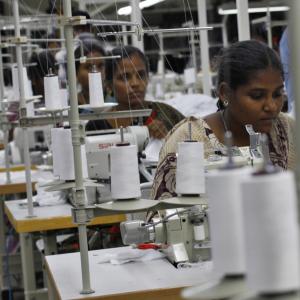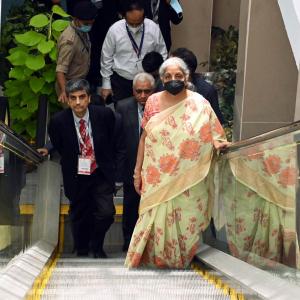It came as a surprise to all stakeholders — competing telecom companies (telcos), most analysts and even the government’s internal projections on revenues from the 5G auctions.

Reliance Jio disrupted all calculations by paying a stiff Rs 40,000 crore to buy 10 MHz of spectrum in the 700-MHz band, globally considered a key band for efficient 5G service coverage, along with the default 3.5 GHz band and the ultra-high speed and low-latency millimetre band of 26 GHz band.
So what made Jio pay almost 45 per cent of its total spend in this auction for the 700 MHz band — much more than what it rustled up even for the 3.5 GHz band?
Especially when rivals Bharti Airtel and Vodafone Idea stayed away from this band?
As some analysts pointed out, Reliance Industries, of which Jio is a subsidiary, has the cash to splurge and hold spectrum, resources that competitors may lack.
In FY22, Reliance’s cash reserves and surplus were Rs 464,762 crore against Airtel parent Bharti’s Rs 64,000 crore.
But the explanation for these contrasting spends also lies in differing strategies.
Jio is expected to set up a standalone (SA) independent 5G network, which a few telcos in the world have done.
This means the radios, which enable the wireless interface, and the core (or 5GC, which controls the network) will be run on a 5G platform.
Jio’s rivals, on the other hand, are opting for a hybrid model, also called non-standalone (NSA) 5G, that will continue to use and share the 4G core.
They can also fall back on their existing spectrum to get reasonable coverage.
So they do not require spectrum in the 700 MHz band until they also move up to SA.
This strategy, however, reduces the opportunity to monetise their investments by developing use cases for customers.
SA, for instance, enables such opportunities as remote surgery, robotics, autonomous cars, machine-to-machine functions and drone applications, to name a few.
That is because SA networks offer ultra-low latency — which refers to the delay before a transfer of data begins following an instruction for its transfer.
The use cases being developed on SA networks could be a key revenue earner for telcos beyond merely offering applications based on speed.
But running an independent SA 5G network needs support from a low spectrum band (below 1 GHz) and that is where 700 MHz is considered the best globally for 5G (see table).
As minister of communications Ashwini Vaishnaw said, it will help provide ubiquitous coverage across the country, especially in remote villages, and also help roll out 5G services faster.
Telecom vendors say Reliance Jio’s choice was also limited — it has 328 MHz of spectrum in the low band of 850 MHz but most of it is powering 4G coverage, and the 600 MHz band has no ecosystem currently.
So 700 MHz filled that space.
There are other clear differences in Jio’s strategy compared to its rivals.
It is taking equity stakes in or acquiring start-ups to develop end-to-end 5G use cases, including making the hardware.
For instance, to kick-start nascent drone technology — for which the government recently announced a Production Linked Incentive scheme — Jio bought 87.3 per cent in start-up Asteria Aerospace, which will increase its annual manufacturing capacity fivefold.
Neel Mehta, Asteria co-founder, said the Indian market will be $1 billion in the next two years from just $ 200 million currently.
5G-powered drones can be used not only in gas pipelines and telecom tower locations but also for logistics.
Use cases based on immersive technology are another target for Jio.
To this end, it has bought a controlling stake in start-up Tesseract Imaging (now known as Jio Tesseract), which is designing AR/VR glasses and other immersive content.
The telco has also taken a stake in US-based start-up Two Platforms Inc, which has built an artificial reality platform enabling AI voice and video calls and lifelike gaming.
And, of course, it has Meta, formerly Facebook, as a partner and an important shareholder in Jio Platforms Ltd.
But given that the market for these use cases has not even developed globally, is Jio too far ahead of its time?
This question becomes relevant when set against the strategy of key rival Airtel.
As CEO Gopal Vittal explained, “Spectrum acquisition at the latest auction has been part of a deliberate strategy to buy the best spectrum assets at a substantially low relative cost compared to competition.”
So Airtel competed head-to-head with Jio to buy 100 MHz in 3.5 GHz (Jio has bought 130 in some circles) across all circles and 800 MHz in the millimetre, which everyone agrees is enough to launch a good 5G service.
Moreover, Airtel has paid less than half of what Jio paid for its spectrum.
As a senior executive of a telecom vendor company pointed out: “Airtel can always buy 700 MHz in future auctions as 15 MHz is unsold, especially when it moves to SA. So why sink your cash now?”
Besides, UBS estimates that the 5G market in India will only be a 50-million-subscriber market in 2024 but could hit 250 million subscribers by 2027.
This modest outlook for the immediate future appears to have dictated the strategy of cash-poor Vodafone India, too.
In an interview with Business Standard, Ravinder Takkar, non-executive chairman, stated that though the telco has experimented with 20 use cases in the 5G trials, these are still “up in the air”.
Whether Reliance Jio can change the rules of the 5G game, just as it did with 4G services, therefore, remains the key question still.
| A LAYMAN’S GUIDE TO 5G SPECTRUM BANDS |
|
700 MHz band: One of the best bands for coverage, it can radiate as much as 8-10 km from tower to tower, which means the investment for putting up new towers for roll-out is reduced. Also, it has a large ecosystem for equipment globally as China and Europe are adopting it quickly. But the band was not sold in two previous auctions because of a high base price, which was reduced this time 3300-3670 MHz band: It is the core 5G band globally, which provides higher bandwidth and speed than the 4G bands and also some coverage (1-3 km) 26 GHz band: Gives very high speeds, three to four times more than 4G, but its coverage is limited to 100-200 metres |










